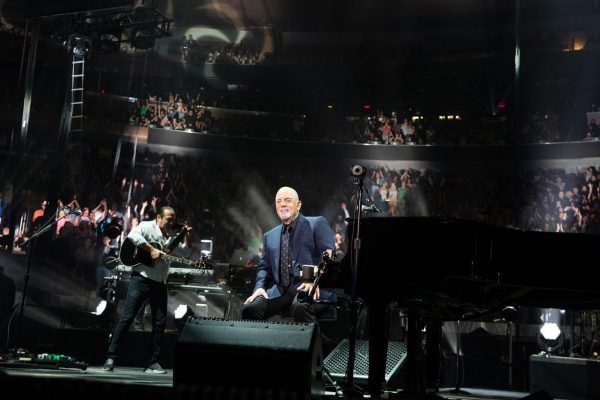LOUISE RATH: When you think of the sounds of a college campus, the most prominent ones are touchdown cheers, parties, and classroom lectures. But here at Syracuse University, these hills are alive with, you guessed it, The Sound of Music.
ANONYMOUS CHIMESMASTER: that at the end of the day, we’re creating ambiance and comfort as people walk through our campus.
LOUISE RATH: They walk among us, we hear them every day. Students may think they know them, but few actually know the faces behind the music.
It’s a huge secret. Do you feel kind of the weight of that as you’re walking around campus, engaging with your friends every day?
ANONYMOUS CHIMESMASTER: just to know, if I’m walking to Crouse to play my shift and I’m walking along the quad, and there’s hundreds of people out there. I’m like, these people are all about to hear me play music and they don’t even know it.
LOUISE RATH: It all happens behind an unmarked door, inside a classroom, in Crouse College. Behind that door, over a century of history.
ANONYMOUS CHIMESMASTER: As soon as people in those classes see us walking by to this door, they’re like… hmmm… interesting.
LOUISE RATH: Possibly more daunting than being found out the seven story ladder that takes you to the top where the music is made.
How steep is the learning curve? When you first start playing?
ANONYMOUS CHIMESMASTER: I’d say it’s fairly manageable. Most most new members can play a simple tune in like a couple of weeks
LOUISE RATH: Appropriately enough, the chimesmasters start at, of course, the bottom of the ladder… on the practice chimes.
ANONYMOUS CHIMESMASTER: So if you look kind of up above your head that is basically an upside down xylophone.
LOUISE RATH: Oh, yeah,
ANONYMOUS CHIMESMASTER: With hammers. Play something, yeah.
LOUISE RATH: *hits lever* Woah!
LOUISE RATH: So now that I’ve had a little bit more practice, I’m about to join a long but seemingly short list of students who gets to play music for all of the campus to hear and I’m going to try my hand at a real classical work.
LOUISE RATH: After trying my hand at some music, I took a trip to the university archives to learn about the history of the iconic bell tower. The bells first graced the hills with music in 1889, When a Syracuse football player and member of the Delta Kappa Epsilon fraternity became the very first Chimesmaster.
ANONYMOUS CHIMESMASTER: It was one fraternity on campus, so it was Delta Kappa Epsilon up until about World War Two when all the brothers went off to service it was taken over by a sorority.
LOUISE RATH: The Chimesmasters tradition lived solely in Greek life until the official formation of the chimes masters of crafts in the late 1980s.
LYNDA MACCINI PAVLOFF: I was there when they were in the middle of renovating it because we couldn’t get up to that room because they were storing a lot of the music equipment in that room.
LOUISE RATH: During my visit to the archives, I found a photo of Lynda Maccini Pavloff, a member of the chimesmasters in the late 80s.
LYNDA: And I’m definitely glad that tradition is still going on.
LOUISE RATH: My conversation with Linda shed light on one of the organization’s greatest secrets, the rumor that Dick Clark’s signature is somewhere in the tower.
LYNDA: Oh yeah, it was definitely there because there weren’t that many signatures on the wall
when I was there, so.
LOUISE RATH: While the signature has since disappeared, Lynda’s memories of the ladder are ever vivid.
LOUISE: I’ve been up the ladder, it’s kind of scary.
LYNDA: It is. And I’m afraid of heights so I’m not really sure how I ever do that.
LOUISE: Fear of heights are not each tribes Master has one thing in common their love for this long standing tradition.
ANONYMOUS CHIMESMASTER: It’s more important to maintain the tradition of keeping the bells playing and keeping music on our campus. So these hills can sing the songs they’ve sung for 130 years in Syracuse, Louise Rath NCC News.




